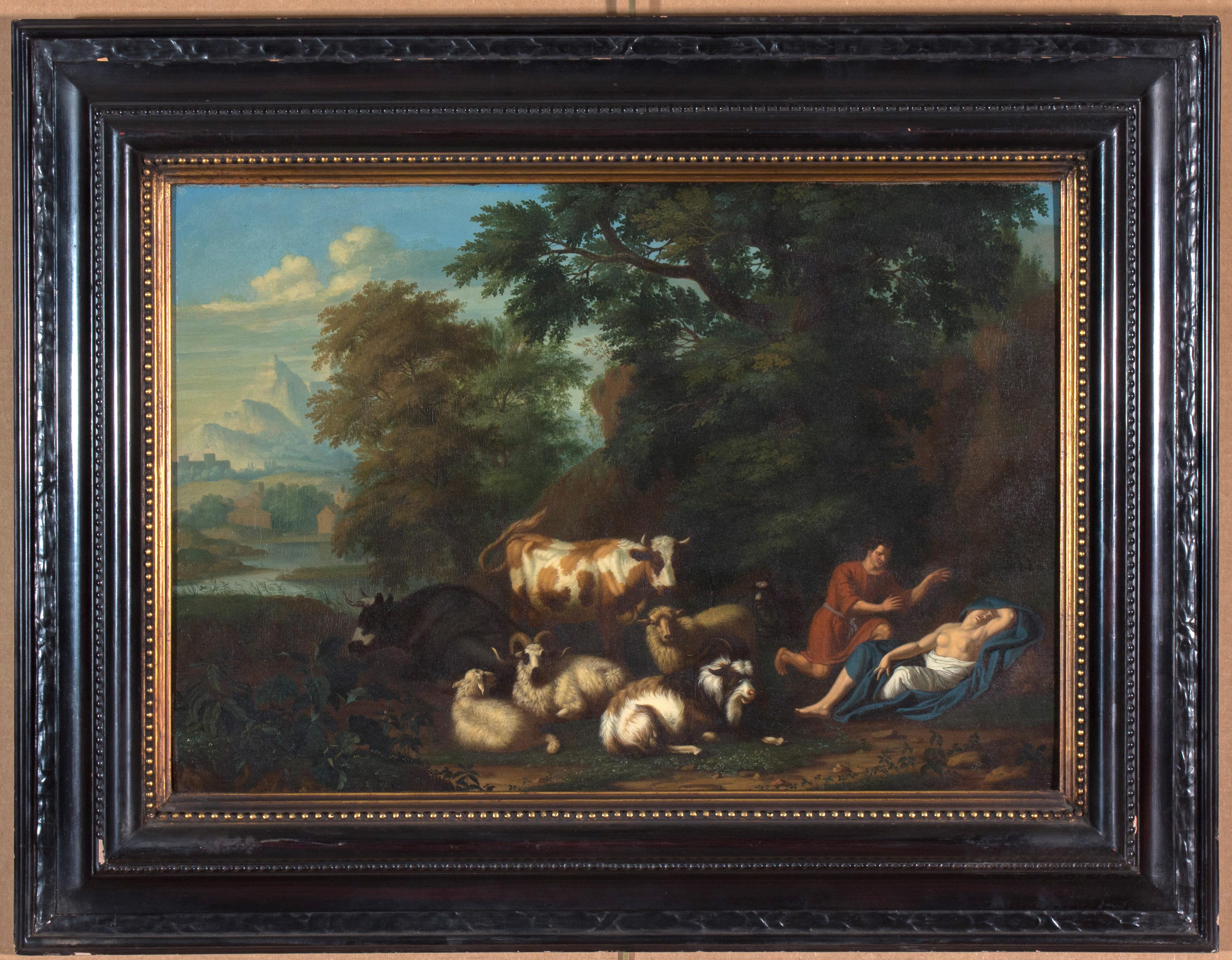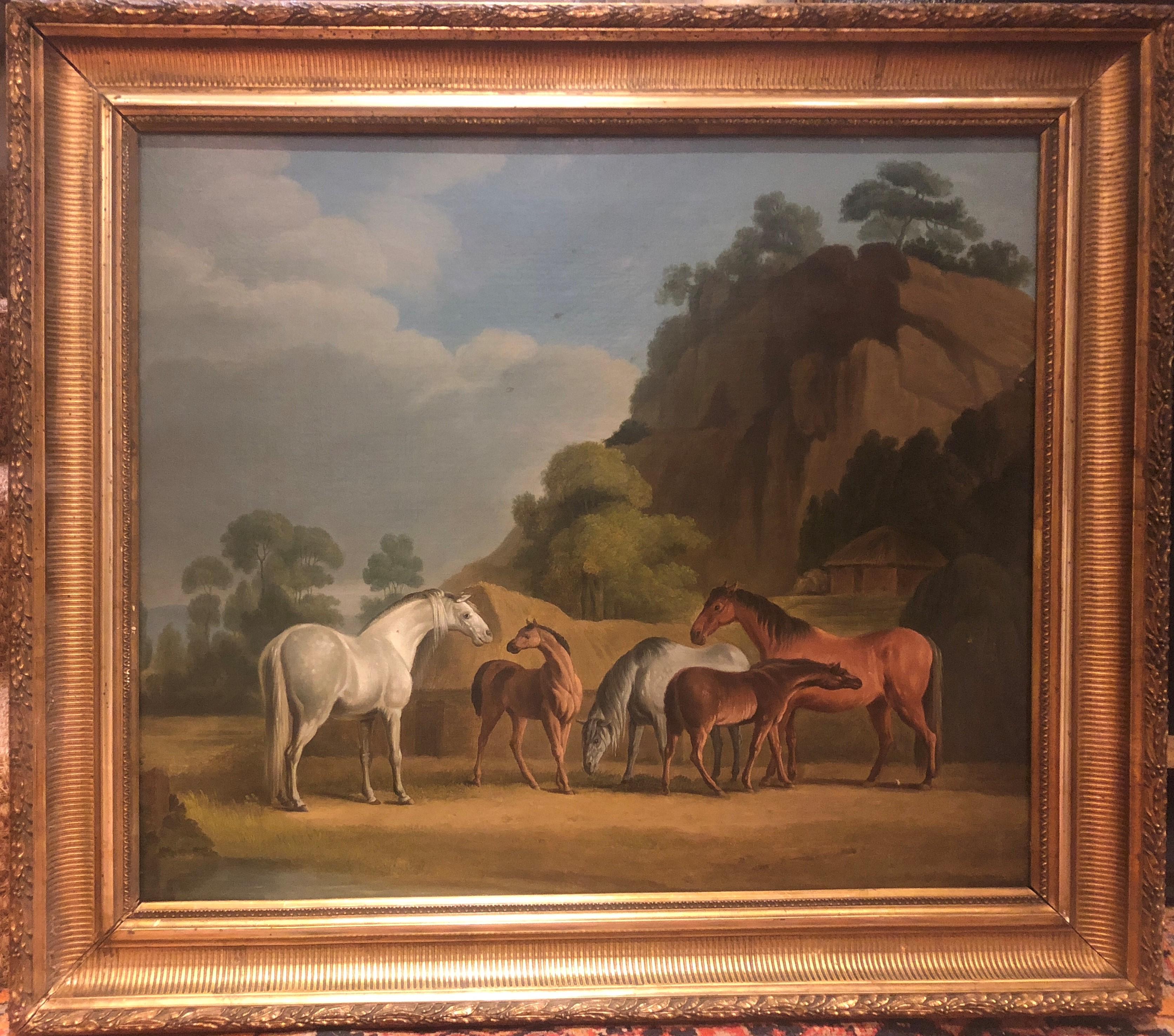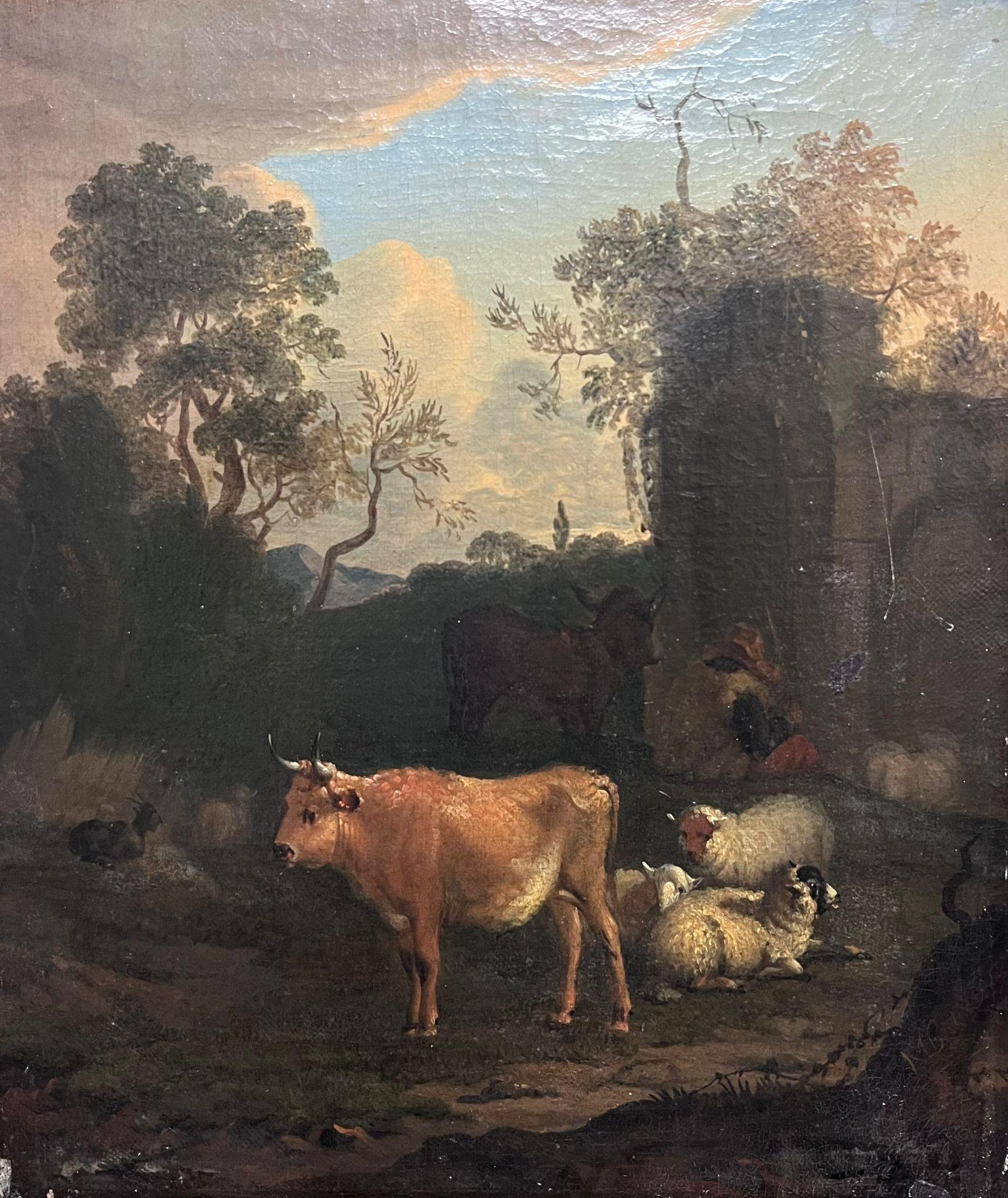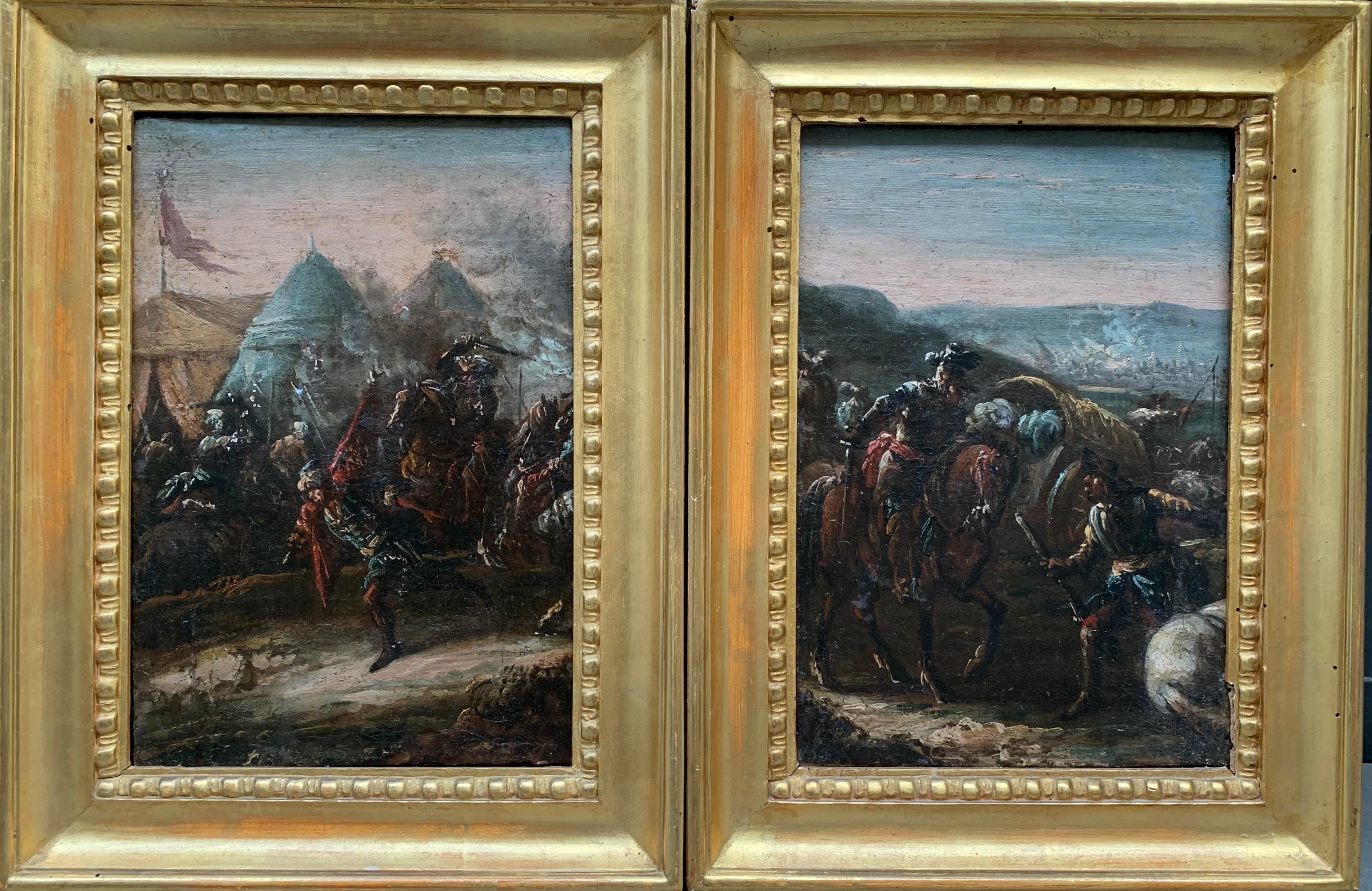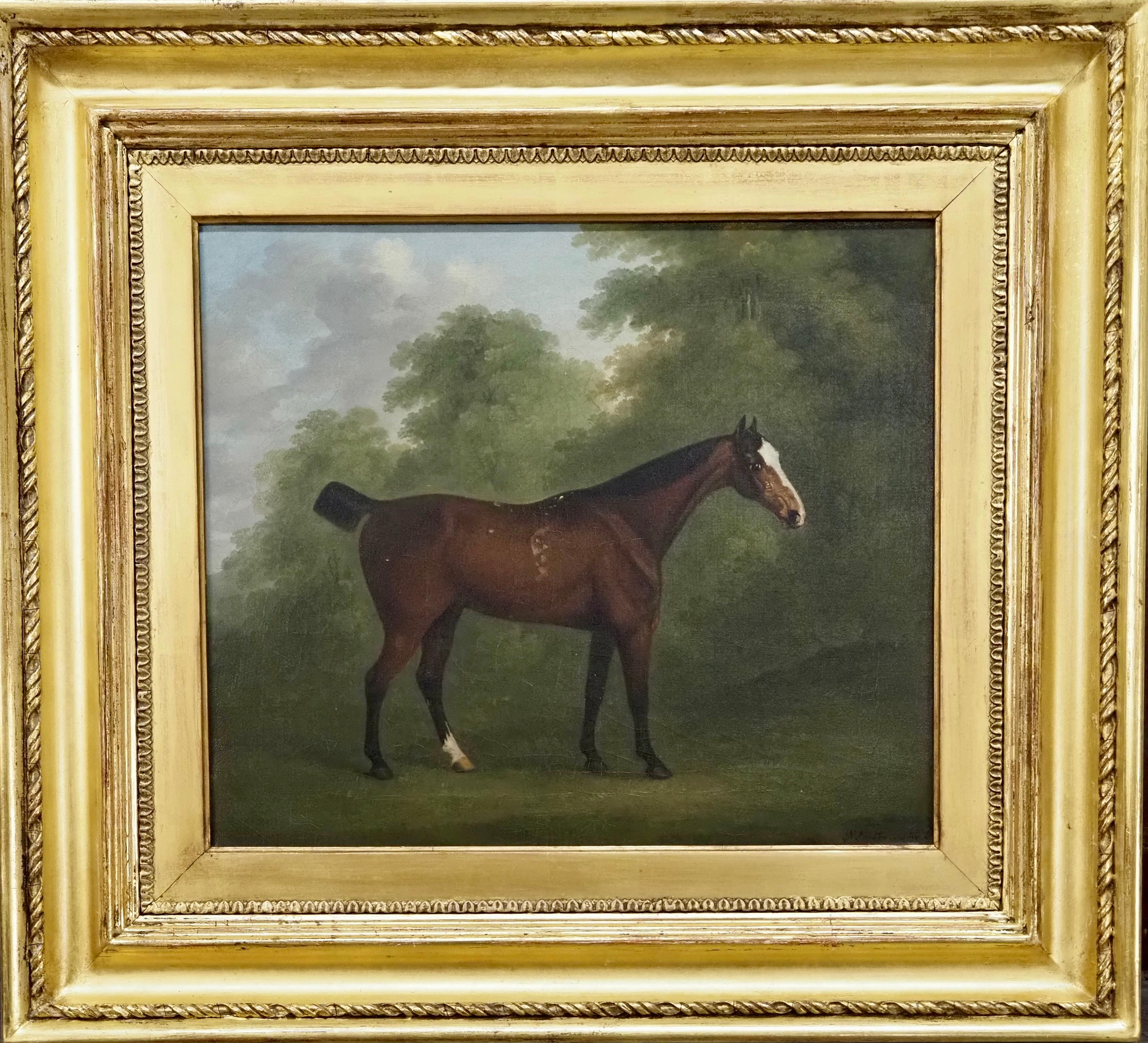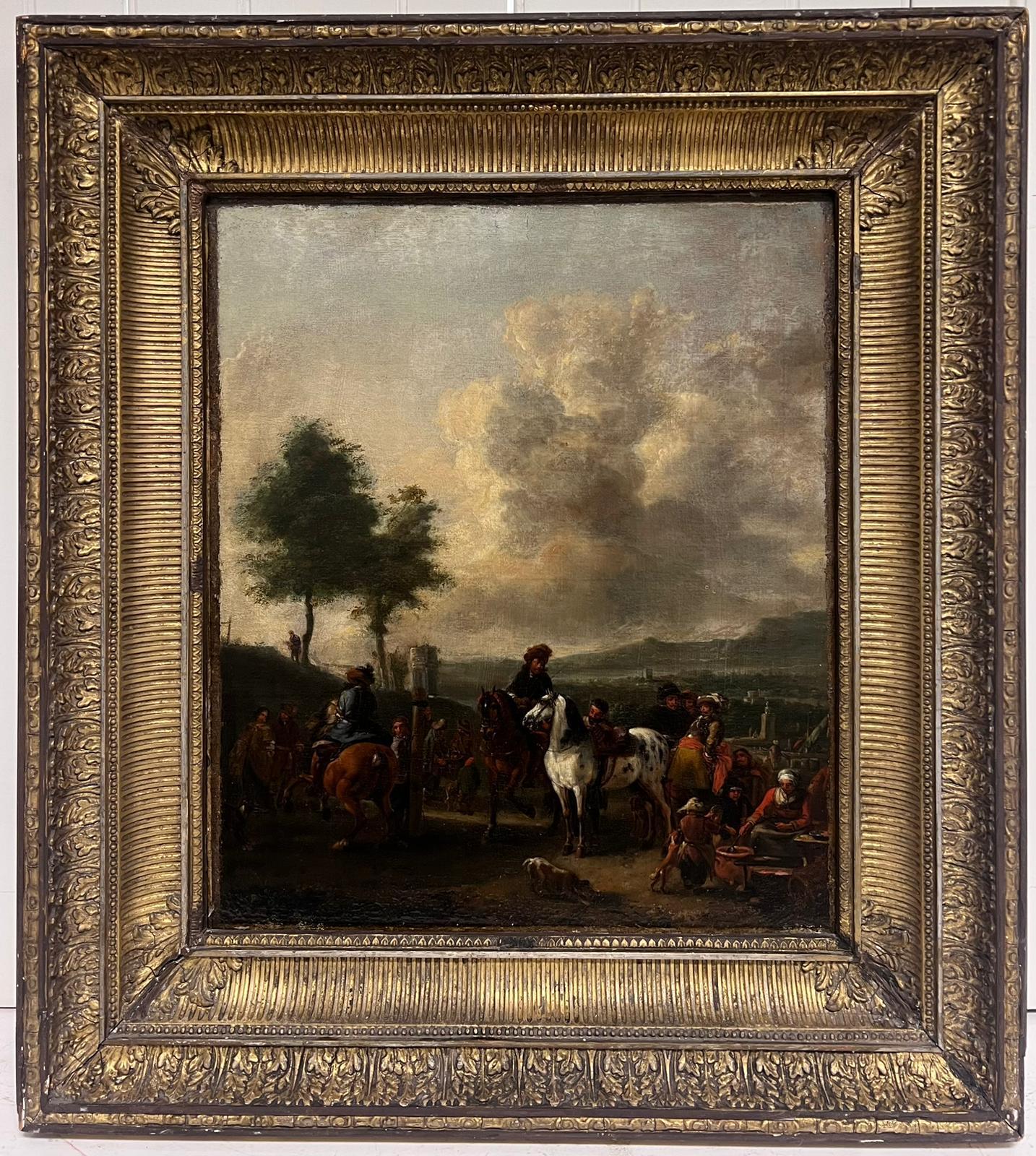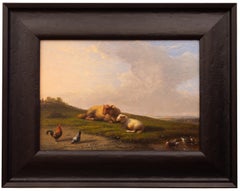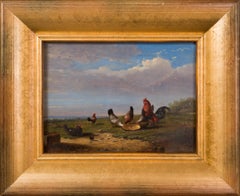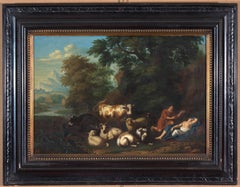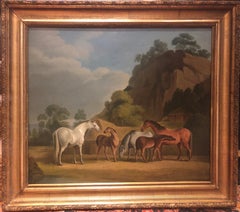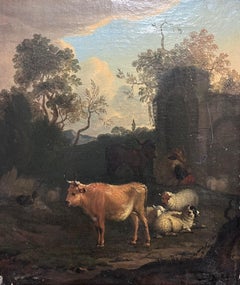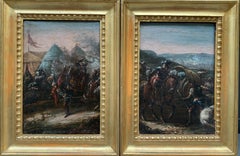Objekte ähnlich wie The Bird Concert – After Jacob Savery
Möchten Sie mehr Bilder oder Videos?
Zusätzliche Bilder oder Videos von dem*der Anbieter*in anfordern
1 von 14
The Bird Concert – After Jacob Savery1700s
1700s
Angaben zum Objekt
Follower of Jacob Savery (1566-1603)
Concert of Birds
18th-century
oil on panel
unframed: 42 × 44 cm (16.5 × 17.3 in)
framed: 53 × 54 cm (20.9 × 21.3 in)
Expertise:
Stéphane Pinta, Cabinet Turquin, Paris.
Provenance:
Private collection (Segersjö Manor, Sweden).
Condition:
The painting is in a fine condition, having undergone careful conservation by restorer Sonia Léon (2024–2025). Only very minor retouching is detectable under UV light; the original glaze and pigment survive beautifully. The panel is stable and free of major cracks. It is shown in a richly gilded Baroque-style frame that complements the work; the frame has minor wear and several discreet repairs consistent with its age, but remains robust and handsome.
Essay:
This enchanting wood-panel painting assembles a menagerie of exotic and domestic fowl in a lush landscape, bathed in a gentle shaft of light from an overcast sky. The vivid blue peacock reigns at center atop a sandy mound, flanked by graceful white swans to the left. A proud rooster and a magnificent brown eagle (or similar raptor) stand to the right, while a variety of other birds—a heron or stork, a red-crested fowl, and smaller waterfowl—gather around. Above them, brilliantly colored parrots perch on a branch, adding bursts of red and green. The painter’s precise yet lively brushwork captures every shimmering feather and subtle shift of posture, creating a tableau that feels both natural and deliberately staged.
Artistic Tradition and Symbolism
This bird concert belongs to a well-known Flemish and Dutch tradition of the 17th–18th centuries, where painters depicted assemblies of birds as allegories. Such scenes often celebrate the sense of hearing or musical harmony in nature. In many examples, an owl sits perched like a conductor holding a musical score; here there is no visible owl or notation, but the composition itself — with birds turned as if to listen — suggests a silent music. A ray of light from heaven illuminates the gathering, hinting at divine harmony or a saintly blessing. Legend held that birds of Saint Francis of Assisi (sometimes called “birds of the devil” in old fables) could miraculously sing, and this subject was also linked to devotion to “Our Lady of the Birds.”
Jacob Savery’s Legacy and Similar Works
Jacob Savery (1566–1603) was a Flemish-born painter who settled in the Netherlands and became known for detailed landscapes and animal scenes. He trained his nephew Roelant Savery (1576–1639), who became famous for animal paradise scenes (often including a dodo and exotic birds). Jacob Savery himself (and his circle of followers) produced lush bird-and-animal compositions that influenced later generations.
Throughout the 17th and 18th centuries, many artists in this Northern European tradition painted “concerts of birds.” For example:
A Circle of Jacob Savery panel (sold at Christie’s) shows exactly this mix of swans, peacocks, parrots, cockatoos and other birds gathered in a landscape.
Frans Snyders (Antwerp, 1579–1657) created at least five famous Concert of Birds compositions (early 1630s). In Snyders’ works (now in Madrid’s Prado, the Hermitage, Petworth House, etc.),
Jan Brueghel the Younger (Antwerp, 1601–1678) painted an Allegory of Sound: Concert of Birds on a small copper (in which many species perch on trees around an owl and sheet music).
Pieter Casteels III (Antwerp, 1684–1749) was an 18th-century specialist in flower and bird paintings. In 1727 he signed a large Concert of Birds oil on canvas featuring peacocks, swans, and other exotic birds very similar to ours.
Composition, Style, and Notable Features
The painter’s technique balances detail with atmosphere. Feathers are carefully rendered, giving each bird a lifelike presence. Yet the brushstrokes in the foliage and distant trees are freer, creating a soft-focus depth. The color scheme is warm and earthy: russets and ochres in the ground and eagle, deep blues and greens in the peacock, and the brilliant whites of the swans shimmering against the landscape. A glow filters through the clouds, spotlighting the central group – a theatrical effect also found in some Snyders and Casteels compositions.
Unlike many earlier bird-concert paintings which place all birds on branches or classical pedestals, this Follower of Savery version uses the open ground as a stage. The absence of a sheet of music or human figure makes the scene more naturalistic and mystical at once. The overall impression is both decorative (full of exotic variety) and symbolic (the beam of light and attentive poses suggest a shared moment of natural harmony).
Provenance: Segersjö Manor, Sweden
The painting originates from the collection of Segersjö Manor in the province of Närke (Sweden). Segersjö, a country estate built in 1776, was historically the seat of the noble Montgomery (later Montgomery-Cederhielm) family and is noted for its extensive picture gallery and library. Over centuries Segersjö passed through royalty and Swedish nobility (even receiving royal favour from Queen Christina and Karl XII) and was known for its cultivated taste.
- Entstehungsjahr:1700s
- Maße:Höhe: 53 cm (20,87 in)Breite: 54 cm (21,26 in)
- Medium:
- Bewegung und Stil:
- Nach:Jacob Savery I (1565 - 1603)
- Zeitalter:
- Zustand:The painting is in a fine condition, having undergone careful conservation by restorer Sonia Léon (2024–2025). Only very minor retouching is detectable under UV light. The panel is stable and free of major cracks.
- Galeriestandort:Stockholm, SE
- Referenznummer:1stDibs: LU1445216383992
Anbieterinformationen
5,0
Platin-Anbieter*in
Premium-Anbieter*innen mit einer Bewertung über 4,7 und 24 Stunden Reaktionszeit
Gründungsjahr 2020
1stDibs-Anbieter*in seit 2020
181 Verkäufe auf 1stDibs
Typische Antwortzeit: <1 Stunde
Verbände
International Confederation of Art and Antique Dealers' Associations
- VersandAngebot wird abgerufen …Versand von: Stockholm, Schweden
- Rückgabebedingungen
Einige Inhalte dieser Seite wurden automatisch übersetzt. Daher kann 1stDibs nicht die Richtigkeit der Übersetzungen garantieren. Englisch ist die Standardsprache dieser Website.
Authentizitätsgarantie
Im unwahrscheinlichen Fall eines Problems mit der Echtheit eines Objekts kontaktieren Sie uns bitte innerhalb von 1 Jahr für eine volle Rückerstattung. DetailsGeld-Zurück-Garantie
Wenn Ihr Objekt nicht der Beschreibung entspricht, beim Transport beschädigt wurde oder nicht ankommt, kontaktieren Sie uns bitte innerhalb von 7 Tagen für eine vollständige Rückerstattung. DetailsStornierung innerhalb von 24 Stunden
Sie können Ihren Kauf jederzeit innerhalb von 24 Stunden stornieren, ohne jegliche Gründe dafür angeben zu müssen.Geprüfte Anbieter*innen
Unsere Anbieter*innen unterliegen strengen Dienstleistungs- und Qualitätsstandards, wodurch wir die Seriosität unserer Angebote gewährleisten können.Preisgarantie
Wenn Sie feststellen, dass ein*e Anbieter*in dasselbe Objekt anderswo zu einem niedrigeren Preis anbietet, werden wir den Preis entsprechend anpassen.Zuverlässige weltweite Lieferung
Unsere erstklassigen Versandunternehmen bieten spezielle Versandoptionen weltweit, einschließlich individueller Lieferung.Mehr von diesem*dieser Anbieter*in
Alle anzeigenHirte mit Schafen, Kühen und einer Ziege in einer Landschaft von Jan Frans Soolmaker
Jan Frans Soolmaker (Flandern 1635-1685)
Schafhirte mit Schafen, Kühen und einer Ziege in einer Landschaft
Öl auf unterfütterter Leinwand
Leinwandformat 56 x 53 cm
inklusive Rahmen...
Kategorie
17. Jahrhundert, Alte Meister, Tiergemälde
Materialien
Leinwand, Öl
5.649 $ Angebotspreis
25 % Rabatt
Kostenloser Versand
Hirte mit Schafen, Kühen und einer Ziege in einer Landschaft von Jan Frans Soolmaker
Das Gemälde zeigt eine pastorale Szene, die dem Künstler Jan Frans Soolmaker zugeschrieben wird, einem Künstler, der für seine italienisch anmutenden Landschaften und Szenen bekannt ...
Kategorie
17. Jahrhundert, Alte Meister, Tiergemälde
Materialien
Leinwand, Öl
4.172 $ Angebotspreis
20 % Rabatt
Schafe ruhen in einem Meadow von Francois (Frans) Van Severdonck, 1861, signiert
Francois (Frans) Van Severdonck (1809-1889) Belgier
Schaf rastend auf einer Wiese
unterzeichnet Franc...? Van Severdonck und datiert 1861
Öl auf Platte
Tafelgröße 16 x 23 cm
Rahm...
Kategorie
1860er, Tiergemälde
Materialien
Öl, Holzverkleidung
Rooster and Hens at Daybreak von Frans van Severdonck, 1862
"Hahn und Hühner bei Tagesanbruch" ist ein reizvolles Gemälde des belgischen Künstlers Frans van Severdonck (1809-1889), das das ländliche Leben zeigt. Der gebürtige Brüsseler Van Se...
Kategorie
1860er, Tiergemälde
Materialien
Öl, Holzverkleidung
2.503 $ Angebotspreis
20 % Rabatt
Hahn mit Hennen und Enten an einem Teich von Alfred Schönian
Alfred Schönian (1856-1936) Deutschland
Hahn mit Hennen und Enten an einem Teich
Öl auf Platte
unterzeichnet A.Schönian München
Plattenabmessungen 6,29 x 9,44 Zoll (16 x 24 cm)
Ra...
Kategorie
Spätes 19. Jahrhundert, Romantik, Landschaftsgemälde
Materialien
Öl, Holzverkleidung
2.549 $
Kostenloser Versand
Eine Herbstabendstudie, 1901 (En höstkvällstudie, 1901)
Von Fritz Lindström
Dieses Landschaftsgemälde des schwedischen Künstlers Fritz Lindström fängt die Stille der Stockholmer Schären ein. "An Autumn Evening Study, 1901" ist eine beeindruckende Darstellung...
Kategorie
Frühes 20. Jhdt., Landschaftsgemälde
Materialien
Leinwand, Öl
9.178 $ Angebotspreis
20 % Rabatt
Das könnte Ihnen auch gefallen
Eine pastorale Szene aus dem achtzehnten Jahrhundert von Jan van Gool, 1719
Jan van Gool
(Niederländisch, 1685-1763/65)
Pastorale Szene, 1719
Öl auf Platte, 15 x 21 3/4 Zoll
GERAHMT: 23 x 29 1/2 (ca.)
Signiert und datiert unten links: "J V Gool [JVG conjoin...
Kategorie
1710er, Alte Meister, Landschaftsgemälde
Materialien
Öl, Täfelung
Ölgemälde von Pferden aus dem 19. Jahrhundert – Mares und Foals in einer Landschaft
Von Daniel Clowes
Daniel CLOWES (1774-1829) nach George Stubbs
Stuten und Fohlen in einer Landschaft
öl auf Leinwand
29 x 33 Zoll, inkl. Rahmen
Daniel Clowes lebte und arbeitete sein ganzes Lebe...
Kategorie
19. Jahrhundert, Alte Meister, Tiergemälde
Materialien
Öl
Feine 18. Jahrhundert Niederländisch Alte Meister Ölgemälde Rinder & Schafe Antike Ruinen
Pastorale Landschaft
Niederländischer Alter Meister, 18. Jahrhundert
Öl auf Leinwand, ungerahmt
Leinwand: 12 x 10 Zoll
Provenienz: Privatsammlung, Großbritannien
Zustand: guter und g...
Kategorie
18. Jahrhundert, Alte Meister, Tiergemälde
Materialien
Öl
Militärische Camp-Szene und Schlacht. Pietro Graziani (XVII/XVIII Jahrhundert), Gepäckstück
Militärische Camp-Szene und Schlacht.
Pietro Graziani (XVII/XVIII Jahrhundert), Gefolge.
Ein Paar (zwei) kleine Gemälde.
Antike Rahmen aus dem XIX. Jahrhundert aus vergoldetem Holz...
Kategorie
Early 18th Century, Alte Meister, Landschaftsgemälde
Materialien
Leinwand, Oil
2.500 $ Angebotspreis
38 % Rabatt
Kostenloser Versand
Ein Buchtpferd in einer Waldlandschaft
John Nost Sartorius (London 1759-1828)
Ein Buchtpferd in einer Waldlandschaft
Signiert 'J.N.Sartorius' unten rechts
Öl auf Leinwand
Leinwand Größe - 12 x 14 in
Gerahmt Größe - 19 x 2...
Kategorie
18. Jahrhundert, Alte Meister, Tiergemälde
Materialien
Öl
7.168 $ Angebotspreis
25 % Rabatt
Feine niederländische Ölgemälde eines alten Meisters, Militärische Lagerfiguren auf Pferd, 17. Jahrhundert
Das Militärlager
Holländische Schule, 17. Jahrhundert
Kreis von Philips Wouwermans (Niederländer 1619-1668)
Ölgemälde auf Leinwand, in vergoldetem Rahmen aus dem 18.
Maße der Leinwan...
Kategorie
17. Jahrhundert, Alte Meister, Landschaftsgemälde
Materialien
Öl, Leinwand
